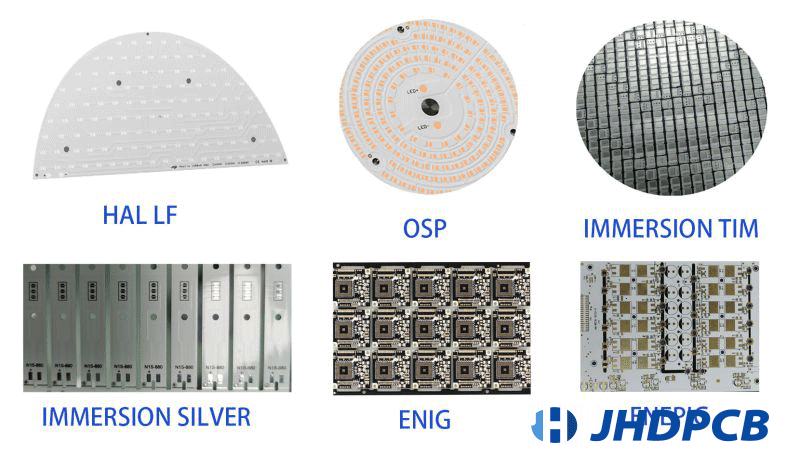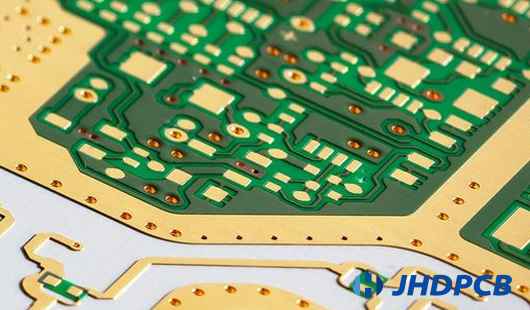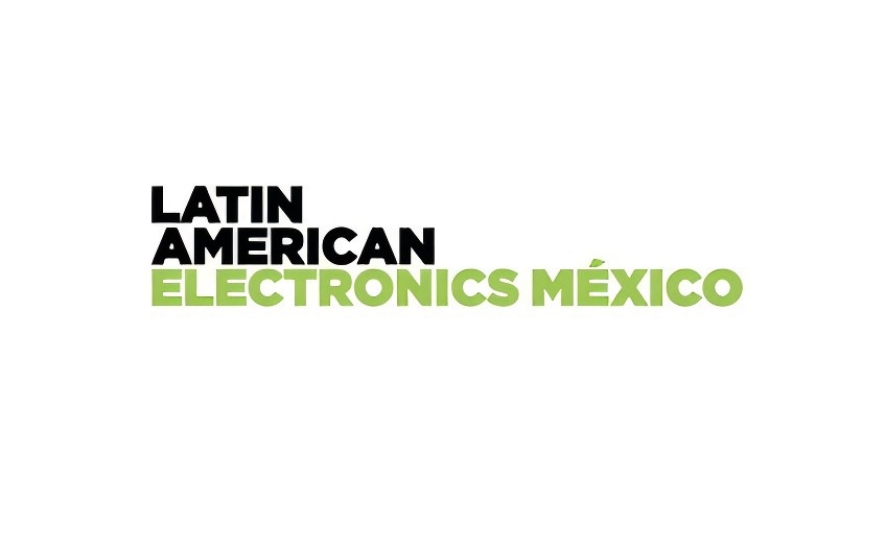PCB surface treatment guide
sales@jhdpcb.com
In PCB manufacturing, Why is PCB surface treatment necessary?
It is well known that copper is easily oxidized and deteriorated when exposed to air, which seriously affects the solderability and electrical properties of PCBs. In circuit board manufacturing, the implementation of PCB surface treatment can effectively improve the reliability and shelf life of PCBA. If the surface of the circuit board is not treated, it is easy to cause soldering problems. In severe cases, the pads and components cannot be soldered.
The purpose of surface treatment is to ensure good solderability or electrical performance of the PCB.
8 Kinds Of Common PCB Surface Treatment Types.
JHDPCB can process various surface treatment processes according to customer needs, such as hot air leveling (HASL), hot air leveling lead-free (HASL Lead-free), organic coating (OSP), electroless nickel immersion gold (ENIG), electroless plating Nickel palladium immersion gold (ENEPIG) immersion silver, immersion tin, etc. Different types of surface treatments have different shelf lives. Below is a brief analysis of several common types of PCB surface treatment for reference!
HASL, hot air solder leveling.
Hot air leveling, also known as hot air solder leveling, is a process of coating molten tin-lead solder on the surface of the PCB and leveling (flattening) with heated compressed air to form a layer that is resistant to copper oxidation and provides good solderability Sexual coating. A copper-tin metal compound available from the junction of the solder and copper in hot air leveling, which thickness is about 1 to 2 mils.
OSP, Organic coating.
OSP is different from other surface treatment processes: its role is to act as a barrier layer between copper and air; in simple terms, OSP is to chemically grow an organic film on the clean bare copper surface. This layer of film has anti-oxidation, thermal shock resistance, and moisture resistance to protect the copper surface from rusting (oxidation or vulcanization, etc.) in a normal environment; at the same time, it must be easily removed in the subsequent welding high temperature with the scaling powder so as to do facilitate soldering.
The organic coating process is simple and low in cost, making it widely used in the industry. The early organic coating molecules are imidazole and benzotriazole, which play a role in preventing rust, and the newest molecules are mainly benzimidazole. In order to ensure that multiple reflow soldering can be performed, only one organic coating layer on the copper surface is not acceptable. There must be many layers. This is why copper liquid is usually added to the chemical bath. After coating the first layer, the coating layer adsorbs copper; then the organic coating molecules of the second layer are combined with copper, until twenty or even hundreds of organic coating molecules gather on the copper surface.
ENIG.Chemical gold.
Electroless Nickel/Immersion Gold, abbreviated as ENIG, also known as nickel gold, immersion nickel gold or electroless nickel gold, is to replace palladium on the surface of copper through a chemical reaction and then electroless plating on the palladium core A layer of nickel-phosphorus alloy, and then a layer of gold is plated on the surface of the nickel through a displacement reaction. The immersion gold of nickel gold has two processes: displacement and semi-replacement and semi-reduction mixed bath building.
Different from OSP, which is only used as an anti-rust barrier layer, it can be useful and achieve good electrical performance during long-term use of PCB. In addition, it also has environmental tolerance that other surface treatment processes do not have. It is used to prevent the copper on the surface of the circuit board from being oxidized or corroded. It is also used for soldering and applied to contacts (such as buttons, gold fingers on memory sticks, etc.)
The reason for nickel plating is that gold and copper will diffuse each other, and the nickel layer can prevent the diffusion between them. Without the barrier of the nickel layer, gold will diffuse into the copper within a few hours. Another benefit of electroless nickel/immersion gold is the strength of nickel. Only 5um thick nickel can control the expansion in the Z direction at high temperatures. In addition, electroless nickel/immersion gold can also prevent the dissolution of copper, which will benefit lead-free soldering.
IAG. Immersion Silver.
The immersion silver process is between OSP and electroless nickel/immersion gold, and the process is simple and fast. Immersion silver is not to put thick armor on the PCB. Even if it is exposed to heat, humidity and pollution, it can still provide good electrical performance and maintain good solderability, but it will lose its luster. Because there is no nickel under the silver layer, immersion silver does not have the good physical strength of electroless nickel/immersion gold.
Immersion silver is a displacement reaction, it is almost sub-micron pure silver coating. Sometimes the immersion silver process also contains some organic matter, mainly to prevent silver corrosion and eliminate silver migration problems. It is generally difficult to measure this thin layer of organic matter. Analysis shows that the weight of the organism is less than 1%.
ISN. Immersion tin.
Since all solders are based on tin, the tin layer can be matched with any type of solder. From this point of view, the immersion tin process is very promising. However, tin whiskers are prone to appear in the previous PCBs after the immersion tin process, and the tin whiskers and tin migration during the soldering process will cause reliability problems, thus restricting the use of the immersion tin process. Later, organic additives were added to the tin immersion solution to make the tin layer structure in a granular structure, which overcomes the previous problems and also has good thermal stability and solderability.
The immersion tin process can form a flat copper-tin intermetallic compound. This feature makes immersion tin have the same good solderability as hot air leveling without the headache flatness problem of hot air leveling; there is also no electroless nickel plating/dipping Diffusion between gold and metal; it’s just that the immersion tin plate can’t be stored for too long.
Electroplated Nickel Gold.
Electroplated nickel gold is the earliest technology in the process of PCB Surface Finishes. It has been available since the advent of PCB boards, and other processes are appeared slowly. Electroplated nickel gold is with nickel electrocladding as the first layer on the surface conducting body of the PCB, and with gold electrocladding as the second layer. Nickel cladding is mainly to avoid spreading between copper and gold. There are two kinds of electroplated nickel gold: soft gold plating and hard gold plating. Electroplated nickel soft gold is mainly acting on gold wire in chip packaging; Electroplated nickel hard gold is mainly acting on electrical connections in area without soldering.
Soldering can cause electroplated gold to become brittle under normal conditions, thus reducing service life, so avoid welding on electroplated gold; although electroless immersion gold is consistent and thin, brittleness hardly ever happens.
Electroless Palladium.
The process of electroless palladium plating is close to electroless nickel plating. The main process is the reduction of palladium ions to palladium on the catalytic surface by reducing agents such as sodium dihydrogen hypophosphite. This new type of palladium named a catalyst that promotes the reaction, from which palladium coatings of any thickness included.
The advantages of electroless palladium are good solder reliability, surface finish smoothly and thermal stability. The disadvantage is that palladium is a really rare precious metal, so the cost would be high.
ENEPIG, Electroless Nickel Electroless Palladium Immersion Gold.
The electroless nickel-electroless palladium-immersion gold ,which short for ENEPIG,also named as electroless nickel-electroless palladium-immersion gold which technology has three structures of a nickel layer, a palladium layer and a gold layer. There is anther layer of palladium available between the nickel and gold. The electroless palladium layer will protect the nickel layer from excessive corrosion of the gold displacement during the deposition reaction of the gold displacement. The palladium is well-prepared for immersion gold while preventing corrosion from the substitution reaction.
ENEPIG (nickel-palladium immersion gold) technology is used for the surface treatment of package substrates. During the nickel-palladium immersion gold process, the electroless palladium plating and immersion gold control on the nickel layer are used to obtain precise deposition thickness and gold layer uniformity. , To achieve a good contact surface. And optimize the control of the problem of gold infiltration in the immersion gold process to meet the needs of small spacing between the soldering areas. By comparing the wire bonding ability, solderability, and anti-aging ability of the ENEPIG Surface Finish pad and the electroplated nickel gold Surface Finish pad, it is verified that the ENEPIG control technology is also superior to electroplated nickel and gold. The deposited thickness of nickel is about 3-6 m, the thickness of palladium is about 0.1-0.2 m, and the thickness of gold is about 0.03-0.1 m. ENEPIG control technology can obtain excellent and reliable Surface Finish, and meet all the requirements of lead-free assembly process, which is very suitable for the surface treatment and manufacturing of package substrates.

How long is the shelf life of different surface treatments for PCBs?
It have different expiration dates with various surface treatments.PCB shelf life were defined based on PCB surface finishes, IPC define PCB shelf life as below:
- OSP – 6 months;
- HASL – 12 months;
- HASL lead free – 12 months;
- ENIG – 12months;
- ENEPIG – 12months;
- Immersion Silver – 6 months;
- Immersion Tin – 6 months;
- Electroplated nickel gold– 12months;
- Chemical gold– 12months;
The significance of PCB surface finishes.
Different surface treatments will affect the PCB to different degrees, such as:
- Quality of metal-to-metal joints
- Process output
- Rework and scrap rates of production batches
- Test ability
- Cost of manufacturing
Reduces failure rates within the expected application time of the board
JHDPCB is a professional PCB prototype manufacturer, providing various PCB manufacturing and turnkey PCB assembly services with years of experience and high-quality standardized production. State-of-the-art precision equipment and IPC Class 3 compliant service ensure that all of our products are of high quality and reliability. The complete and rigorous pcb surface treatment ensures higher stability of the board. If you have any PCB product needs, please feel free to contact us, we will give a price soon.









